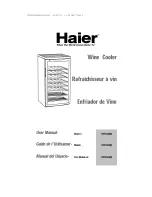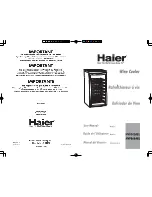
Use oven gloves when placing
food in the oven, turning or
removing it and when adjusting shelves
etc in a hot oven.
When using "Conventional" heating or
when grilling the element in the roof of
the oven and the roof liner (if fitted)
become very hot. Danger of burning.
Do not use plastic containers.
These melt at high temperatures
and could damage the oven.
Do not heat up unopened tins or
jars of food in the oven. Pressure
can build up and they may explode,
resulting in injury or damage.
Do not push pots and pans around
on the oven floor, as this could
damage the surface.
Do not lean or sit on an open oven
door, or place heavy items on it.
This could damage the appliance. The
oven door can support a maximum load
of 15 kg.
To prevent the risk of damage
when closing the oven door, hold
the handle firmly and do not let go of it
until it is shut. Make sure that nothing
gets trapped between the door and the
oven.
Cover any food which is left in the
oven to be kept hot. Any moisture
in the food could lead to corrosion
damage in the oven. This also prevents
the food from drying out.
If you wish to complete a cooking
process using the residual heat in
the oven, do not switch the appliance
off.
Leave the function selector at the
position set and select the lowest
temperature.
Do not switch the appliance off until the
food has been removed. Moisture in the
oven could lead to condensation
forming on the control panel and
surrounding kitchen furniture and drops
of moisture collecting under the
worktop.
Condensation can:
– damage the housing unit / worktop.
– lead to corrosion in the oven.
Bake larger frozen products, such
as pizzas, on baking paper on the
rack itself or in the pizza pan (see
"Extra accessories").
Placing them on the universal tray can
cause the metal to distort, and this
distortion will increase with each
subsequent use.
Frozen food such as oven chips or
croquette potatoes can, however, be
cooked on the universal tray.
Warning and Safety instructions
13














































